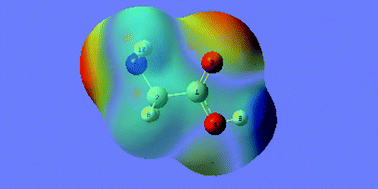A modified electronegativity equalization method for fast and accurate calculation of atomic charges in large biological molecules†
Abstract
To further extend the EEM approach to improve its accuracy, a new approach, in which the different connectivities and hybridized states are introduced to represent the different chemical environments, has been developed. The C, O and N atoms are distinguished between different hybridized states. Different states of hydrogen atoms are defined according to their different connectivities. Furthermore, the sp2 carbons in the aromatic rings are also separated from the other sp2 carbons. Geometries and NPA charges are calculated at the B3LYP/6-31G* level, and the effective electronegativity and hardness values could be calibrated with the help of a training set of 141


 Please wait while we load your content...
Please wait while we load your content...